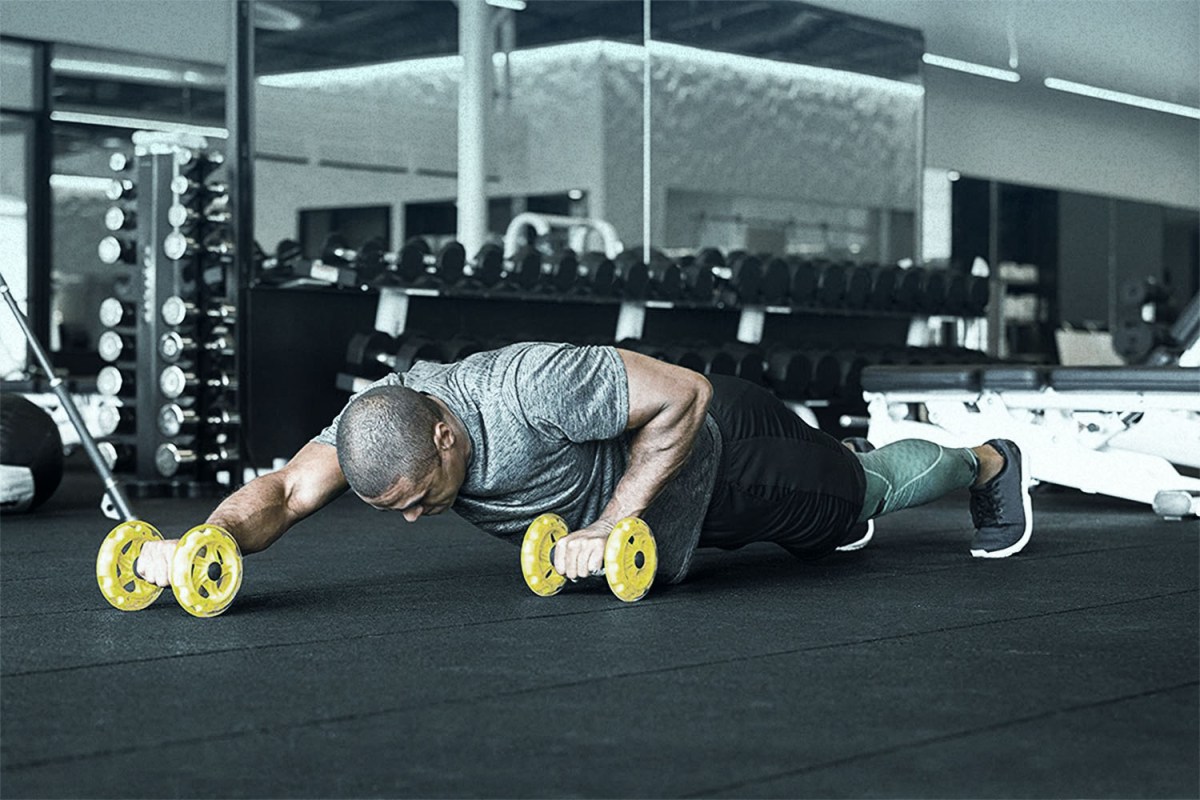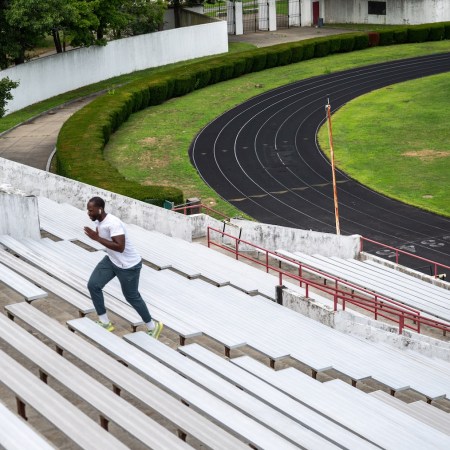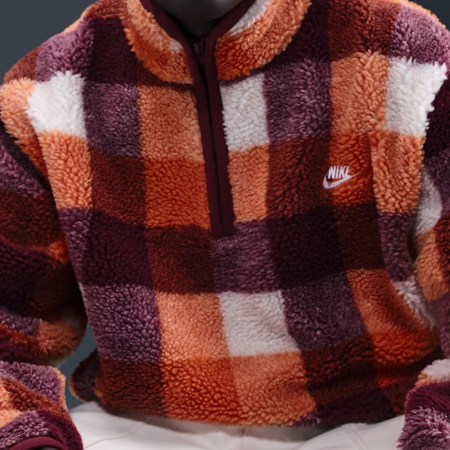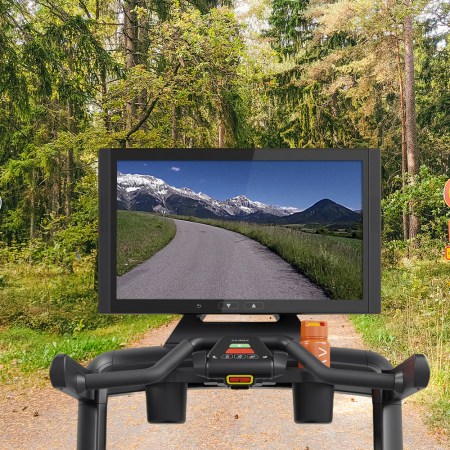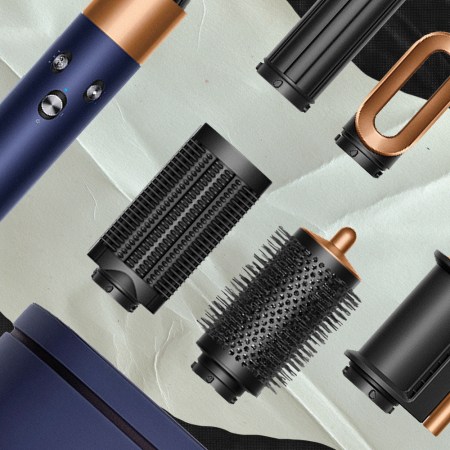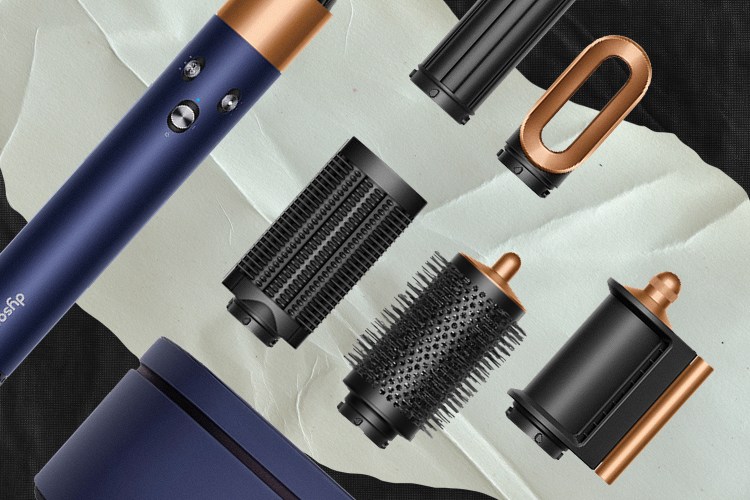Back when gyms still existed, you could scan a training floor and find a few guarantees, no matter what time of day you arrived: a line (more of a clump) waiting to get onto the bench press, a row of folks hammer-curling to their heart’s content in front of a mirror, someone doing 300 sit-ups at a time on a yoga mat. None of these moves are going to hurt you. But their ubiquity is a function of popularity: the exercises we all want to do are those we turn to most often.
Unfortunately, they also tend to do the least to shock the body out of stasis. Track coaches like to preach the efficacy of the everyone’s personal “most effective workout.” It’s always the workout you dread the most. This credo applies to the gym, too. Left to our druthers, we all prefer to build the hero muscles, in quick, comfortable fashion. But we’d be better served taking the time to perfect something strange and unfamiliar, like, say, barefoot lunge walks with weighted torso twists, or drop-set dumbbell flies on a flat bench. You can worry that the lunges will make you look wacky, or that the lighter weight will make you look weak, but learning something different — and doing it correctly — is the best kick in the pants a fitness routine can get.
The home workout era is ideally suited to this pursuit. It allows you to try out new things without the stress of a stranger’s stare, and (assuming you’ve settled into the no-commute thing) with a bit more time to slow down and focus on what you’re trying to achieve. Consider: exercise wheels, a piece of equipment you can add to your home gym for just $35, which fortifies your core and combats the daily wear of sitting in front of a computer for eight hours, by way of “ab rollouts.”
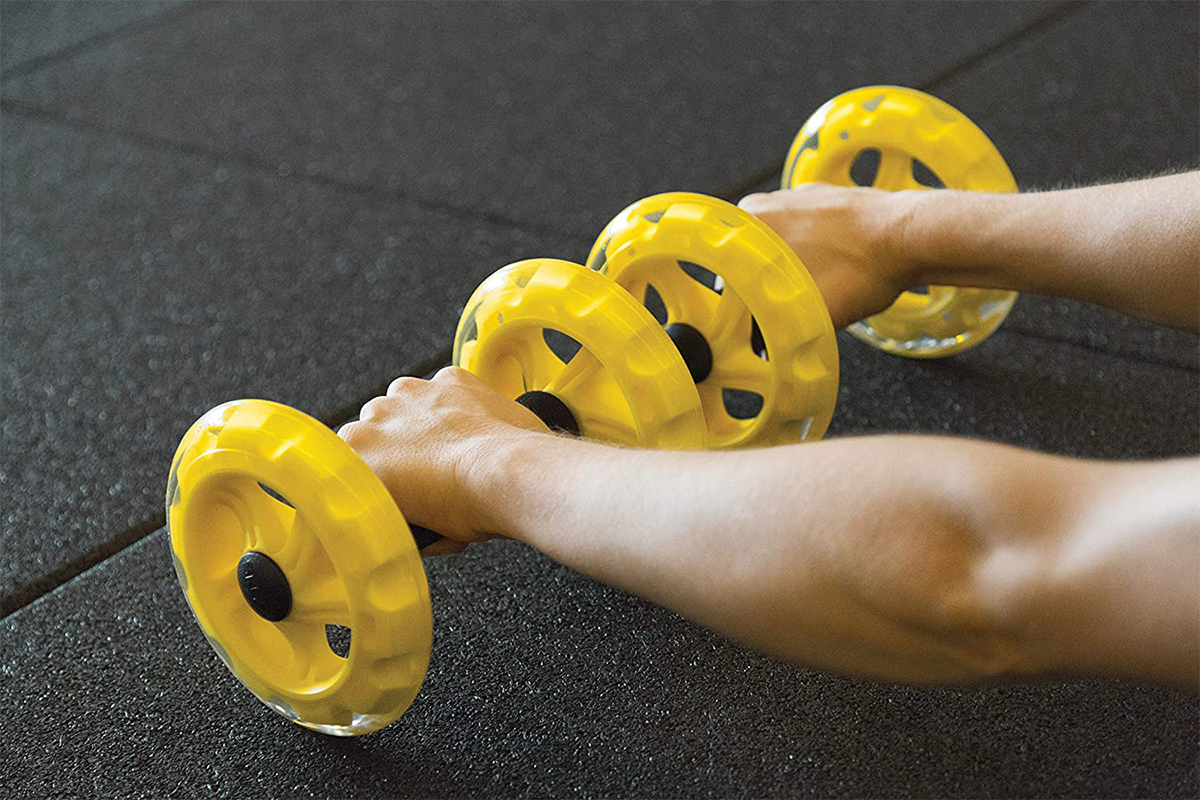
You’ve probably seen an ab wheel before. If your gym had one, it looked like someone chopped a tiny tire off a toddler’s truck and inserted a grip in between the spokes. Unlike the bench press, people don’t tend to fight for access to an ab wheel. While in use, it’s reminiscent of a tool at a fitness rehab office, one that necessitates boring, drawn-out strokes from a trainee whose knees stay perched on a pad. There’s something staid, even geriatric about the move; it’s a sibling of the knee push-up. If you‘ve used one, you may have been tempted to speed up the cadence, or crank out dozens of reps to prove a point.
But that would be completely missing the point. For a few months now, I’ve trained with SKLZ Core Wheels, an updated take on the ab wheel, which features a set of lightweight wheels, each with two encased rollerblade wheels connected via an ergonomic foam handle. They’re an absolute game-changer, a “bodyweight training Swiss Army knife,” which can be deployed to strengthen the posterior chain, make planks fun again and even engage in surprise upper-body strength training, with optionality to perform dynamic push-ups and chest flies. In order to make the wheels do their job, though, you need to get in the weeds and really pay attention to form at the outset.
When using core wheels, place your knees on a yoga mat, with your toes pressed into the ground behind you (sort of like you’re about start a race). I prefer to orient myself perpendicular to the mat; if you roll out atop the mat, a thinner mat will likely bunch up, which will ruin your whole workout. You just want padding for your knees and a fresh stretch of space — floorboards, carpet, tile — ahead for rolling. On my first try, I was surprised to feel zero contraction in my core, but a dull strain in my low back. I’d made a predictable and common mistake in trying to “level” my entire back as I rolled out.
The best you can hope for from that position? A light workout for your lats, and some extra back pain in the morning. It side-steps the core wheels’ full-body capabilities. In order to actually engage the core, as I came to learn, you have to trot out the old cat-camel routine. Tuck your abdomen up into the chest, while slightly rounding the back, and hold that position. When you roll out, the entire point of the exercise is to maintain your careful clench; don’t go so far that you have to compromise the pose. The easiest way to do so? Don’t lead with your arms or your hips. Sequence the entire “hinge” as one fluid movement. After all, at its best it’s a full-body motion.
There is no shame in spending a month trying to perfect a traditional roll-out. Remember, learning a new skill bolsters brain architecture, so you’re fine-tuning your neural pathways in addition to those washboard abs every time you put aside 15 minutes of core wheel work. But once you do “master” kneel roll-outs (at 20 to 30 good reps per set), feel free to start modulating the move. You can push the wheels diagonally, out in a “T” shape (which will also work the chest), or use one at a time, performing one-sided push-ups as you push out.
Head here for more moves. Just remember to tuck your upper abs in, take your time and embrace the weirdness. You can do sit-ups and bicep curls tomorrow.
The Charge will help you move better, think clearer and stay in the game longer. Subscribe to our wellness newsletter today.
